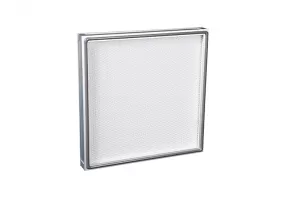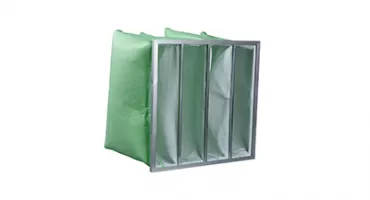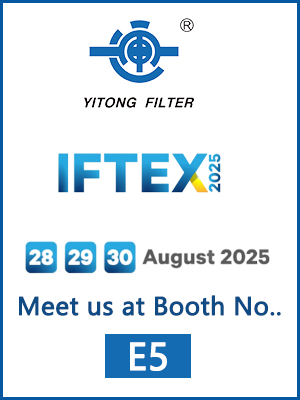 January 02, 2024
January 02, 2024
In an era marked by environmental concerns and health awareness, the quality of indoor air has become a significant focus. Efficient air filtration systems play a pivotal role in maintaining healthier environments by removing particulates and contaminants. Understanding the performance indicators of these filters is essential for selecting the right one for your needs.
Understanding Key Performance Indicators of High-Efficiency Air Filters
1. **Filtration Efficiency:**
The filtration efficiency of an air filter refers to its ability to capture particles of varying sizes. This metric is often represented by a MERV (Minimum Efficiency Reporting Value) or HEPA (High-Efficiency Particulate Air) rating. HEPA filters, for instance, are known for their high efficiency in trapping particles as small as 0.3 microns, capturing a vast majority of airborne contaminants.
2. **Particle Size:**
Airborne particles come in various sizes, ranging from larger dust particles to microscopic pollutants. Filters are designed to capture particles based on their size. Understanding the particle size a filter can capture is crucial for addressing specific air quality concerns.
3. **Pressure Drop or Resistance:**
Resistance or pressure drop indicates the airflow resistance encountered by the filter. While higher efficiency filters often have higher resistance due to their dense structure, they might restrict airflow. Balancing between efficiency and airflow is vital, especially in HVAC systems, to prevent strain on the system and ensure optimal performance.
4. **Filter Longevity:**
The lifespan of an air filter is an important consideration. Some filters may have high efficiency initially but degrade quickly, requiring frequent replacements. Evaluating the longevity of a filter in conjunction with its performance can be cost-effective in the long run.
5. **Contaminant Removal Efficiency:**
Apart from dust and allergens, air filters may target specific contaminants like odors, volatile organic compounds (VOCs), or bacteria. Specialized filters equipped with activated carbon or antimicrobial properties enhance their efficiency in removing these specific pollutants.
6. **Filter Maintenance and Replacement:**
Proper maintenance, including regular cleaning or replacement, is essential to sustain the performance of air filters. Understanding the manufacturer's guidelines regarding maintenance schedules ensures consistent efficiency.
7. **Energy Consumption:**
Energy-efficient filters contribute to lower energy consumption by HVAC systems. Filters that maintain high efficiency while allowing adequate airflow can reduce the overall energy expenditure in the long term.
8. **Environmental Impact:**
Consideration of the environmental impact of air filters is gaining importance. Some filters are designed using eco-friendly materials or are recyclable, contributing to sustainable practices.
In conclusion, selecting the right air filter involves a balance between filtration efficiency, resistance, longevity, and specific air quality needs. Understanding these key performance indicators empowers users to make informed decisions, ensuring cleaner and healthier indoor environments for all.
Testing Methods and Standards for High-Efficiency Air Filters
High-efficiency air filters are crucial components in ensuring clean and healthy indoor air quality. These filters undergo rigorous testing to ascertain their effectiveness in capturing airborne particles and contaminants. Understanding the testing methods and standards is essential in evaluating the performance of these filters.
1. **ASHRAE Standard 52.2:**
The American Society of Heating, Refrigerating and Air-Conditioning Engineers (ASHRAE) developed Standard 52.2, which outlines the testing procedure for determining the efficiency of air filters. This method measures a filter's effectiveness in capturing particles of different sizes, expressed as a Minimum Efficiency Reporting Value (MERV).
2. **Particle Size Efficiency Test:**
Testing laboratories subject air filters to particles of varying sizes to evaluate their filtration efficiency. This test determines a filter's ability to capture particles ranging from larger dust particles to smaller microparticles, typically down to 0.3 microns.
3. **HEPA Filtration Test:**
High-Efficiency Particulate Air (HEPA) filters undergo specialized testing to meet stringent standards. These tests involve challenging the filter with particles of a specific size (0.3 microns) at a predefined airflow rate. HEPA filters must achieve a minimum efficiency of 99.97% in capturing these particles to be certified.
4. **Pressure Drop Test:**
The pressure drop across a filter is measured to assess its resistance to airflow. This test determines how efficiently the filter allows air to pass through while still maintaining its filtration capabilities. Higher efficiency filters might have higher pressure drops due to their denser structure.
5. **Dust Holding Capacity Test:**
Filters are evaluated for their capacity to hold onto captured particles before needing replacement or cleaning. This test helps determine the filter's lifespan and maintenance requirements, ensuring optimal performance over time.
6. **VOC Removal Test:**
Some air filters undergo testing specifically targeting the removal of Volatile Organic Compounds (VOCs). These tests measure a filter's ability to adsorb or neutralize harmful gases and odors, ensuring comprehensive air purification.
7. **Biological Testing:**
Filters designed to capture bacteria, viruses, or other biological contaminants may undergo specific tests to evaluate their efficacy in eliminating these microorganisms. These tests assess the filter's ability to provide a healthier indoor environment.
8. **Standard Compliance:**
Filters are assessed against various national and international standards, such as the European Norm (EN) standards, Chinese National Standards (GB), or the International Organization for Standardization (ISO) standards, ensuring their compliance with quality and performance benchmarks.
Understanding the testing methods and standards for high-efficiency air filters is crucial for consumers, manufacturers, and regulatory bodies. It ensures that filters meet specified performance criteria, providing confidence in their ability to enhance indoor air quality and promote healthier living environments.
 Jun. 06, 2023
Introduction to Laminar Flow HEPA Filter
Jun. 06, 2023
Introduction to Laminar Flow HEPA Filter
 Oct. 10, 2024
The Ultimate Guide to Finding the Right HEPA Filter Supplier
Oct. 10, 2024
The Ultimate Guide to Finding the Right HEPA Filter Supplier
 Jul. 31, 2023
Ultimate Guide to Air Filtration for Paint Booths
Jul. 31, 2023
Ultimate Guide to Air Filtration for Paint Booths

